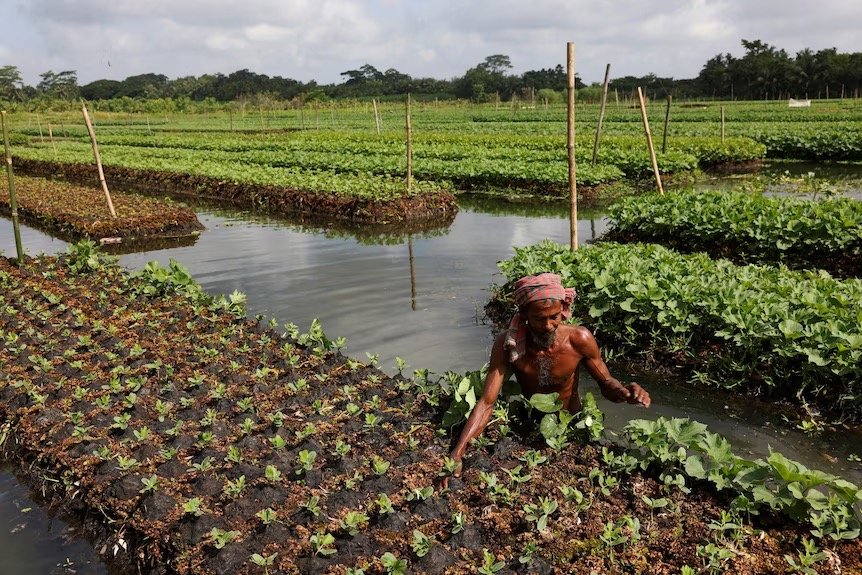Bangladesh’s Floating Farms, Turning Floodwaters into Farmland
Bangladesh, a country shaped by rivers, faces frequent floods that wash away crops and threaten food security. But instead of surrendering, farmers have come up with an ingenious solution—floating farms. These eco-friendly, flood-resistant farms are changing lives by turning water into farmland.
Imagine a farm that floats—built on bamboo and layers of water hyacinth, naturally rising and falling with the water levels. Farmers plant crops like vegetables, spices, and even rice, ensuring year-round harvests. No land? No problem. These raft-like farms can be moved and expanded easily.
Why Floating Farms Matter?
Flood-Proof & Reliable – No more lost crops; the farms rise with the water.
Eco-Friendly & Sustainable – Built with natural materials, improving soil and water quality.
More Food, More Income – Farmers can harvest all year, reducing poverty.
A Model for the Future – Worldwide increasing floods solution.
Floating farming isn’t just a new trend—it’s a practice that Bangladeshis have mastered for generations. Now, as the world looks for sustainable ways to combat climate change, this traditional technique is getting global attention. In a world struggling with rising sea levels and extreme weather, floating farms show us how innovation doesn’t always come from technology—it comes from adapting to nature.

